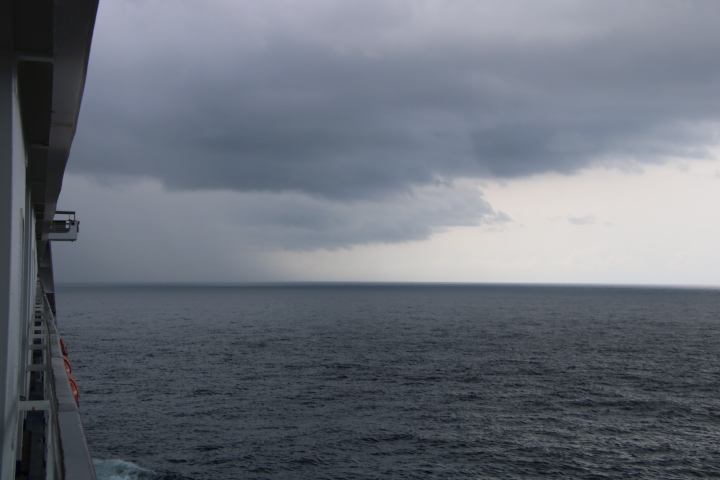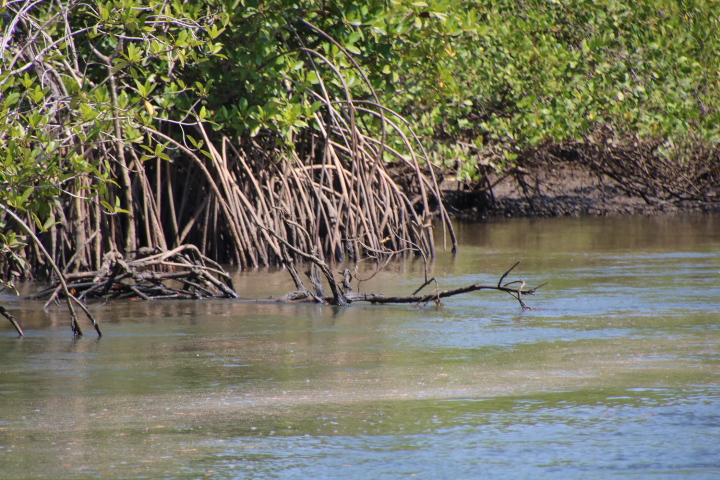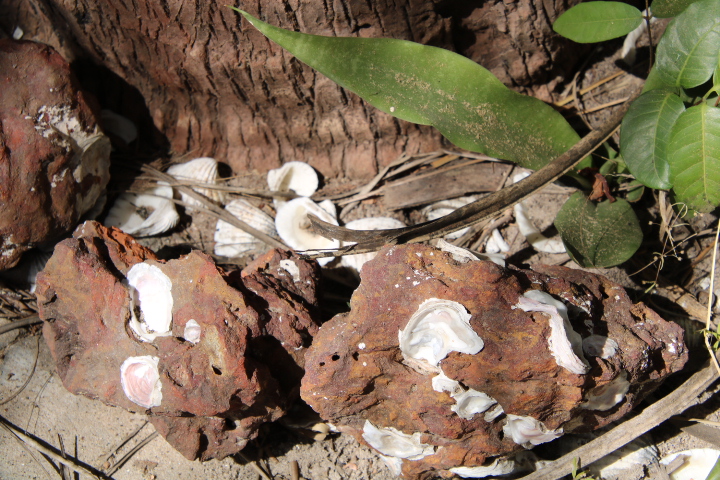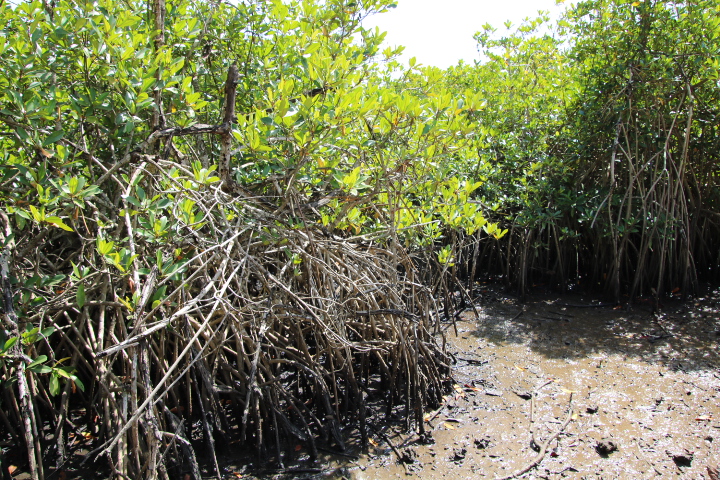At 08:30 we were at 3N 3E heading southeasterly across the Gulf of Guinea.



The eastern end of the Gulf was known as the Slave Coast. To our east is Nigeria and what is left of Benin, a civilisation from 900 – 1897AD that stretched along the coastline of the Gulf and was known as The Benin Kingdom or Empire.

The kingdom’s location linked it with other cultures and the trans-Saharan trade. The first people were the Edo ethnic group of West Africa. By 1514 trading agreements were formed with the Portuguese and 1553 with the British. This trade brought great wealth to the kingdom as well as captives from campaigns into neighbouring countries, who were often sold to the Portuguese. As slavery was abolished Benin’s wealth was lost and eventually subsumed into the British Empire. Looted plaques from Benin City were taken to Britain in 1897. Known as ‘bronzes’ they are mostly brass and were made in the 16th – 17th century. They depict royal figures and court life. When they arrived in Britain, along with other artwork in ivory, ceramic and wood, they caused a stir because society then thought that such a ‘primitive’ nation could not produce such beautiful work.
STOP PRESS! STOP PRESS!
Today BBC News announced that the Horniman Museum is set to return 72 items, including the Benin Bronzes.
The Niger Delta was a maze of creeks and mangroves stretching over 100 miles and were the major source of slaves. Fishing communities acted as middlemen by organising transport of the human cargo from the interior to seagoing vessels. There are records of river boats with up to 50 paddles stopping at riverside markets.
The sea and the lagoons are an interactive part of a ‘sea system’ to which the indigenous people, not only adapted, but actively managed. Many of the river estuaries which enter the cuspate coastline were, dependent upon the season and tides, either an area of almost fresh water or as a full inlet of the sea. This meant fishing communities could catch both freshwater and seawater species. The mangroves became the nurseries for young fish because of the protection provided by the roots and shallow waters which prevented them from falling prey to bigger scavenging fish.




Fish weirs were used which spanned entire widths of channels entering the lagoons as well as wicker baskets, spears, trawl nets, rods or just bare hands to catch the fish. All this evolved over time and with interaction from newcomers who arrived by sea or overland. Salt making at first was associated with lagoons and made by boiling water in pots. This eventually changed to capturing the lagoon water in special land basins where the sunshine evaporates the water.
A wide range of vegetables and fruits, such as sweet potatoes, plantain, bananas, pineapples, limes, ginger, cashew and groundnuts were all grown in the lagoon areas. By the 19th century wild pepper and oil palms were being cultivated. Coconut palms thrived on sand spits in the 18th century. What is interesting is that most of these crops originated from outside Africa and were introduced during the slave trade in its widest sense. The Triangular Trade Route provided more, which in many cases, was already here. The citrus fruits, however, came from the Mediterranean and Madeira where they had been naturalised.
By the end of the 19th century the powers taken to abolish slavery impacted seriously on the Gold Coast and especially because of the British Navy’s ante-slave squadrons. The USA and France did help but the total contribution was small. Not all slave ships were caught, but despite opposition that accused Britain of expanding its empire, the end of the slave trade did see other European countries scrambling to establish colonies and empires in Africa. The Africans may have been exploited but under colonial rule many parts of the continent prospered without enslavement and set the scene for eventual independence. After WW2 the ‘wind of change’ swept through the continent as colonialisation declined and countries controlled their own future.
Following a late morning booming thunderstorm the day ended with dappled cloud and still high temperatures.


